Hello everyone! After our marriage, we came to Assos - Behramkale and while we were resting at the hotel, we decided to visit Assos Ancient City, which is located here. I have prepared a lot of content about Assos and I plan to share all of them with you as I have time. Assos was approximately 130 km away from our house and we had the opportunity to come here for the first time. Normally, Eren thought this place would be quiet, but even though it was a weekday, it was crowded and it was definitely a place that really attracted people. Since I will tell you the details of Assos - Behramkale later, in this post I would like to tell you only about Assos Ancient City and its ruins and tell you what we saw there. If you're ready, let's start!
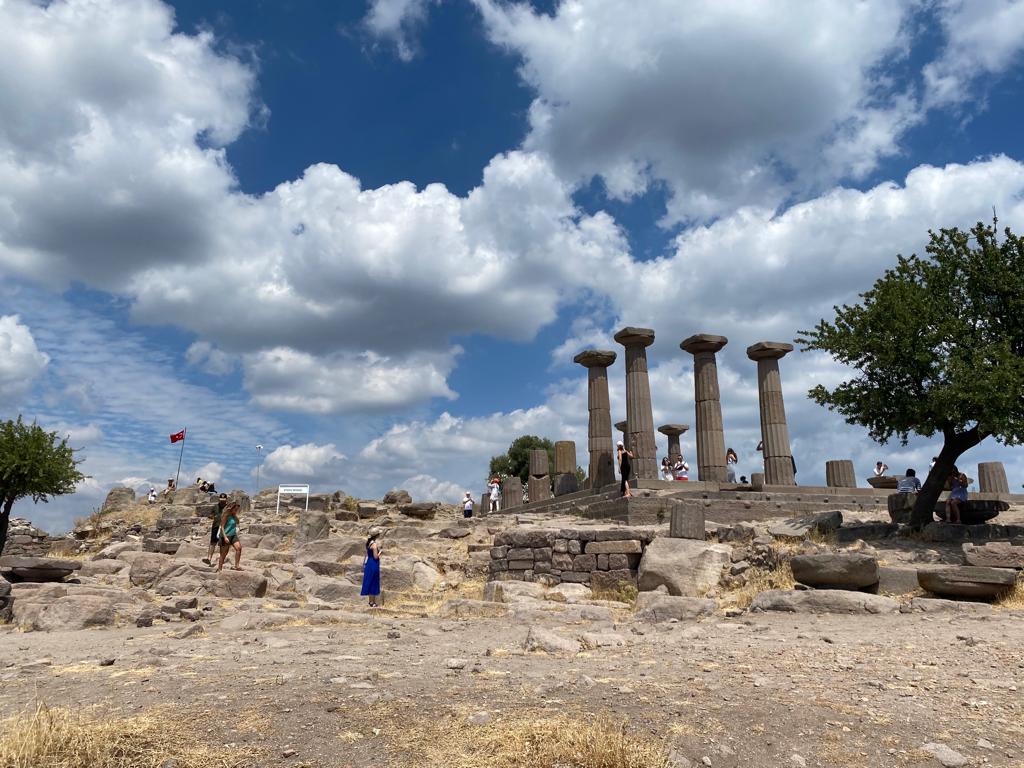.jpeg)
When we arrived at the Assos Ancient City, a place that can be reached by passing through the Behramkale bazaar and at the entrance, a long queue greeted us. We had to buy tickets at the box office and we got in line. There was an entrance fee of 60 TL for Turkish citizens with museum cards and 250 TL for foreign tourists. We didn't care much because we got used to the fact that there are many higher prices for tourists.
There were informative signs when we entered and we started our exploration by reading them and learning about this place. I would like to convey this information on to you.
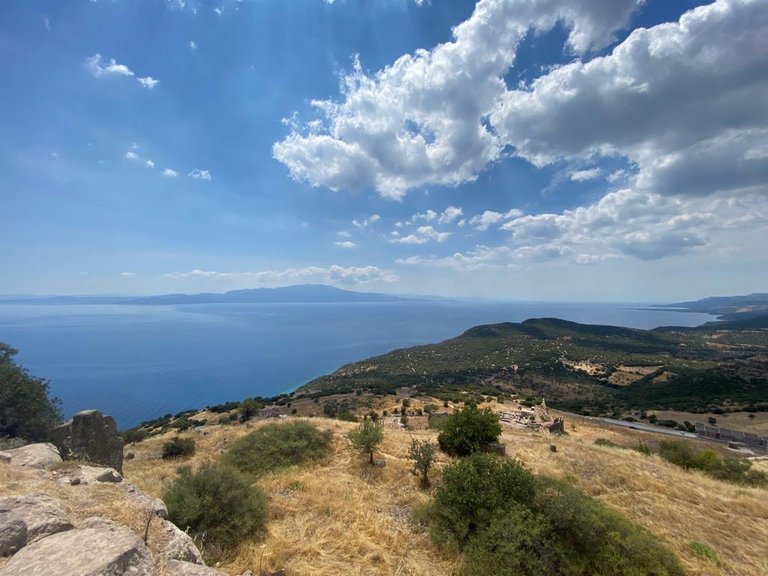.jpeg)
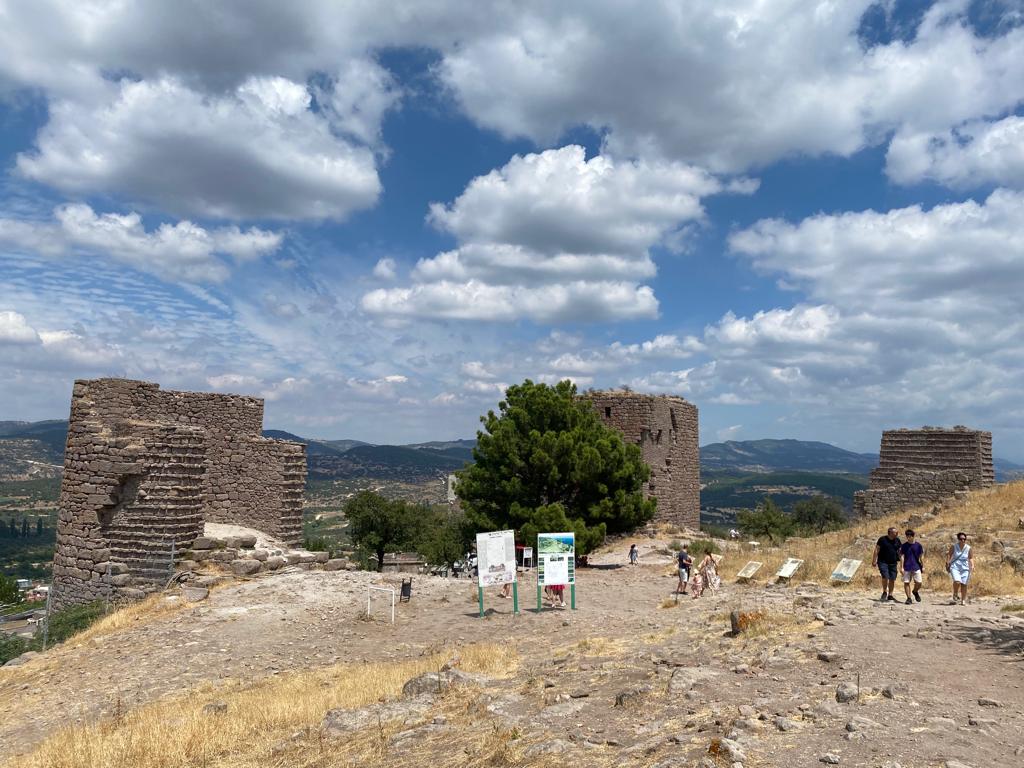.jpeg)
Research History
Marie Gabriel Florent Auguste de Choiseul-Gouffier, who came to the city in 1785, drew the city's plan and wrote of Assos with great praise. In 1835, French traveler Charles Texier examined Assos and prepared a detailed city map that focused specifically on the temple of Athena and the city walls. In the same year, Sultan Mahmud II allowed Texier to remove architectural pieces from the temple of Athena and take them back with him to France. After a brief excavation of the acropolis in 1838, the artifacts were taken to France on a warship and exhibited in the Louvre Museum. In 1865, French authorities learned that the stones required to build the castles in Canakkale would be taken from the ruins of Assos and instructed Edmond Duthoit, who was working in Cyprus in those years, to begin preparing for excavation. While he waited three months for an excavation permission, Duthoit took a survey of all the city walls and made many drawings. Joseph T. Clarke and Francis H. Bacon conducted research in Assos in 1879 and returned to the city in 1881 on behalf of the American Archaeological Institute The excavations ended in the spring of 1883, and one third of collected artifacts were given to the American researchers to be kept at the Museum of Fine Arts in Boston. The remaining artifacts were taken to the Istanbul Archaeological Museum. In 1981, excavations were resumed by Prof. Dr. Ümit Serdaroglu and continued until 2005. Assos archaeological excavation activities have been directed by Canakkale Onsekiz Mart University faculty member Prof. Dr. Nurettin Arslan since 2006. The German Philipps-University Marburg and the Brandenburg Technic University Cottbus are conducting joint projects. Assos was included in UNESCO's World Heritage Temporary List in 2017. The main sponsorship of Assos excavations was undertaken by IÇDAS (Steel, Energy, Shipbuilding and Transportation Industry Inc.). Excavations carried out on behalf of the Ministry of Culture and Tourism are supported by the General Directorate of Cultural Heritage and Museums and the Turkish Historical Society.
source: Informative Guide
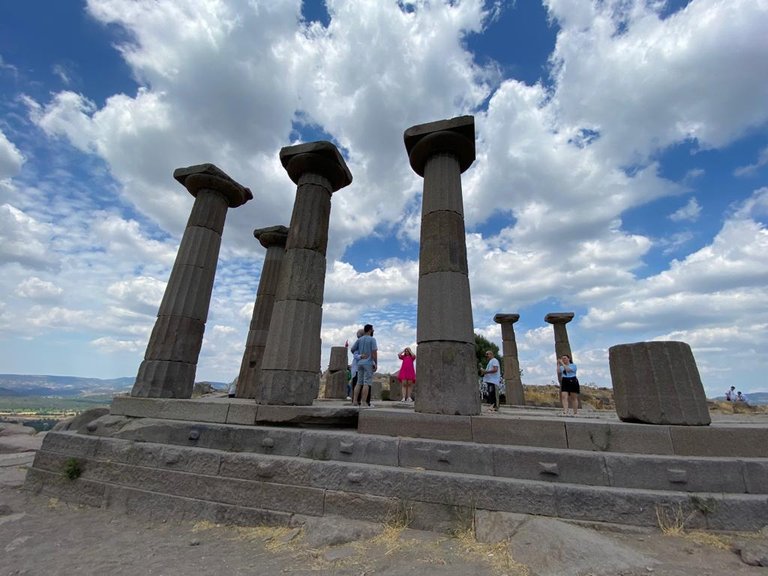
Athena Temple
Assos Athena Temple is the name of this magnificent structure dedicated to Athena in ancient times. In ancient Greek mythology, Athena, the goddess of wisdom and war, was honored with a temple in Assos. Temple, BC. It started to be built in the 6th century and underwent renovations at various times over time.
This ancient temple is an example of great architectural achievement. The temple, which was built in the Ionian style, has details that reflect the aesthetic and engineering understanding of the period. Imposing columns, elaborate reliefs and traces of history create the fascinating atmosphere of the Athena Temple.
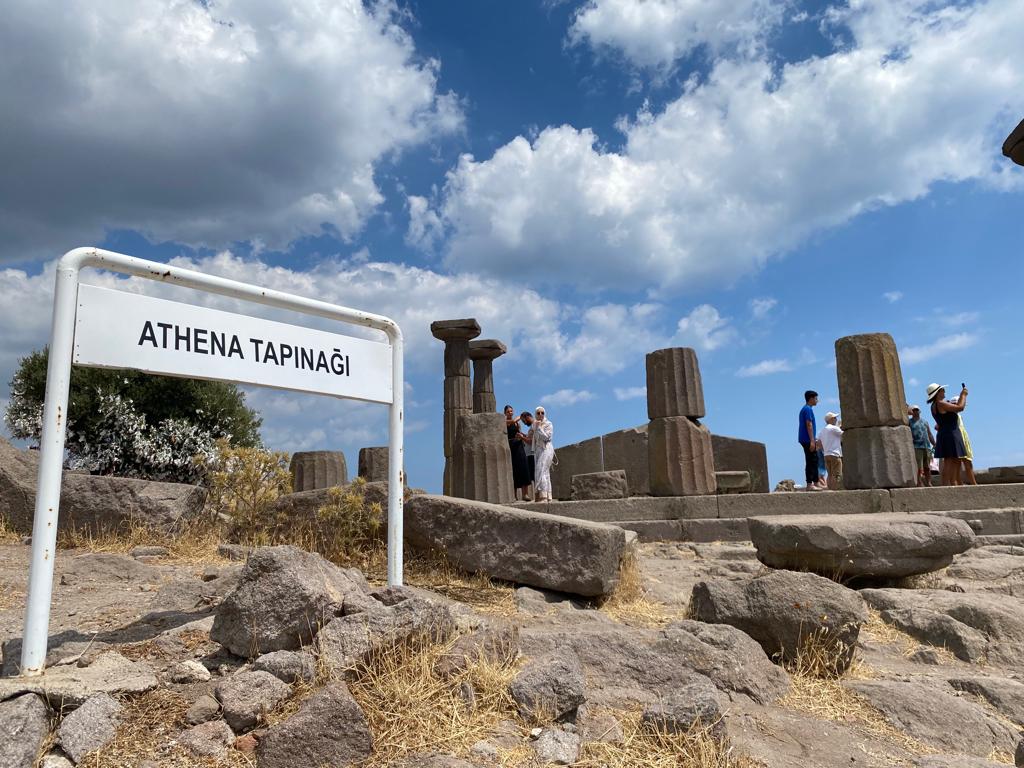
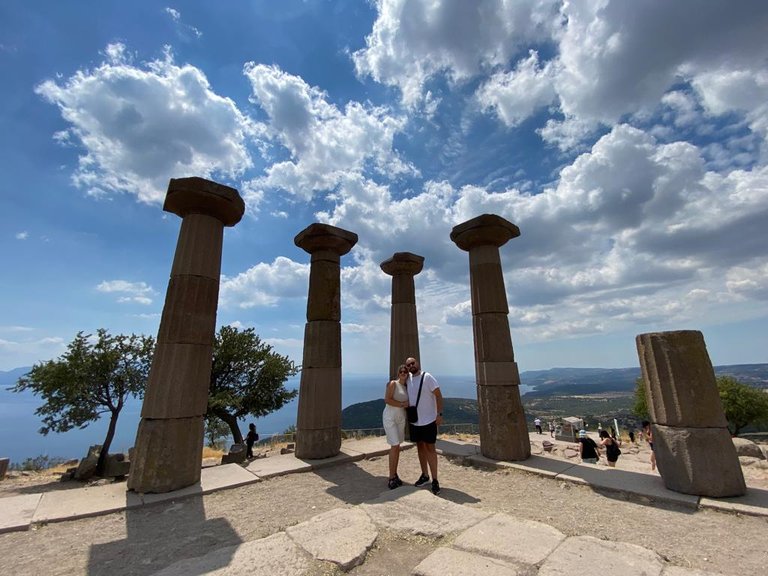.jpeg)
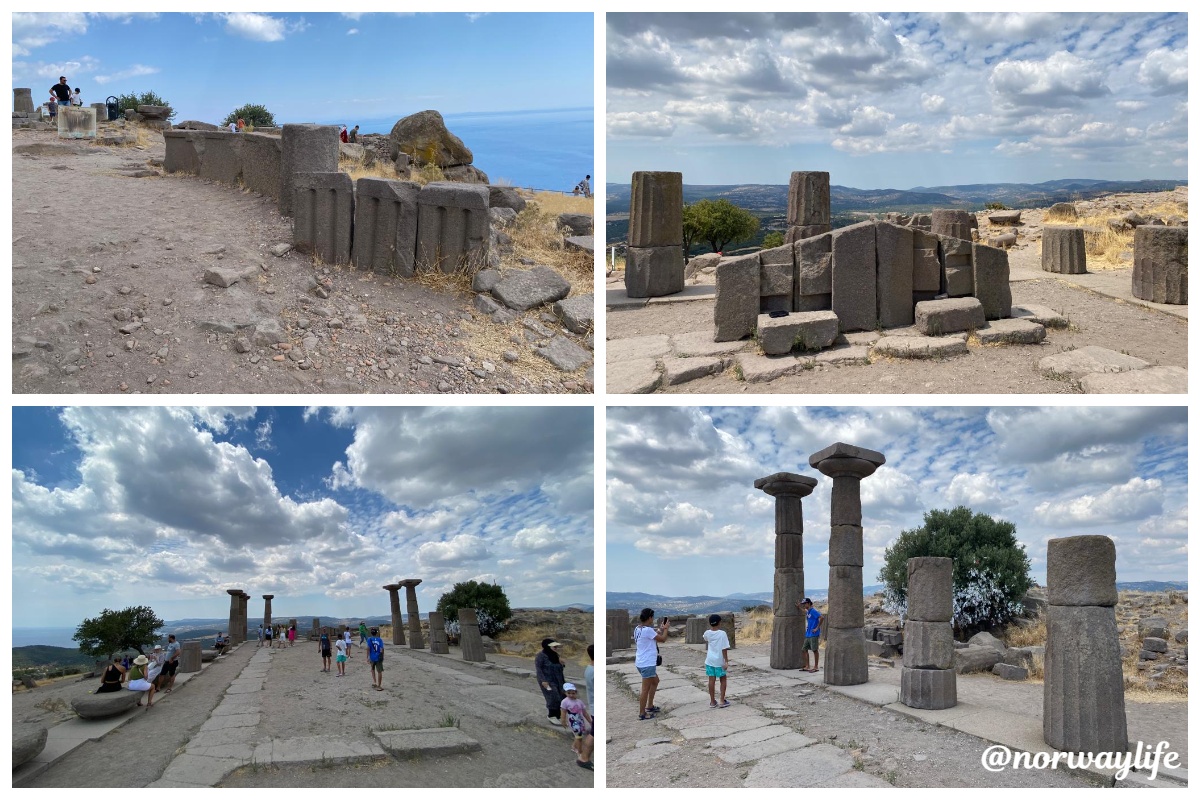
It is a miracle that there are no people in the photos because the place is too crowded.
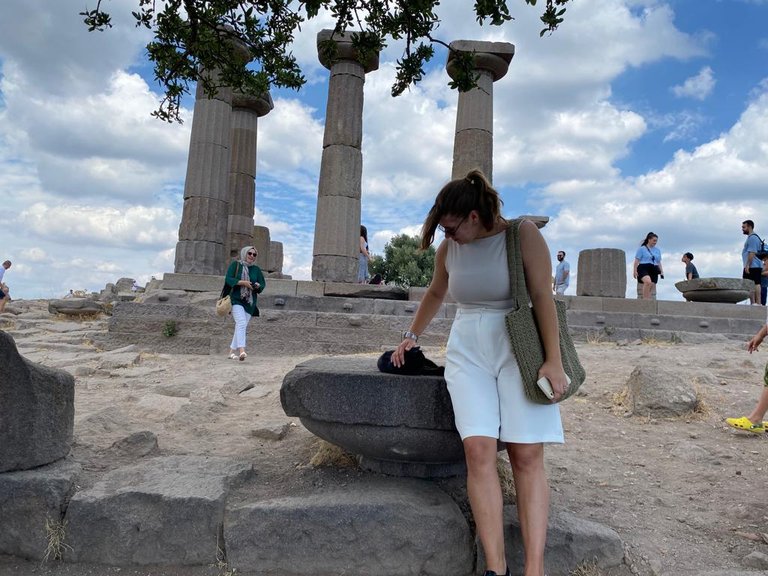.jpeg)
Cats find me everywhere :)
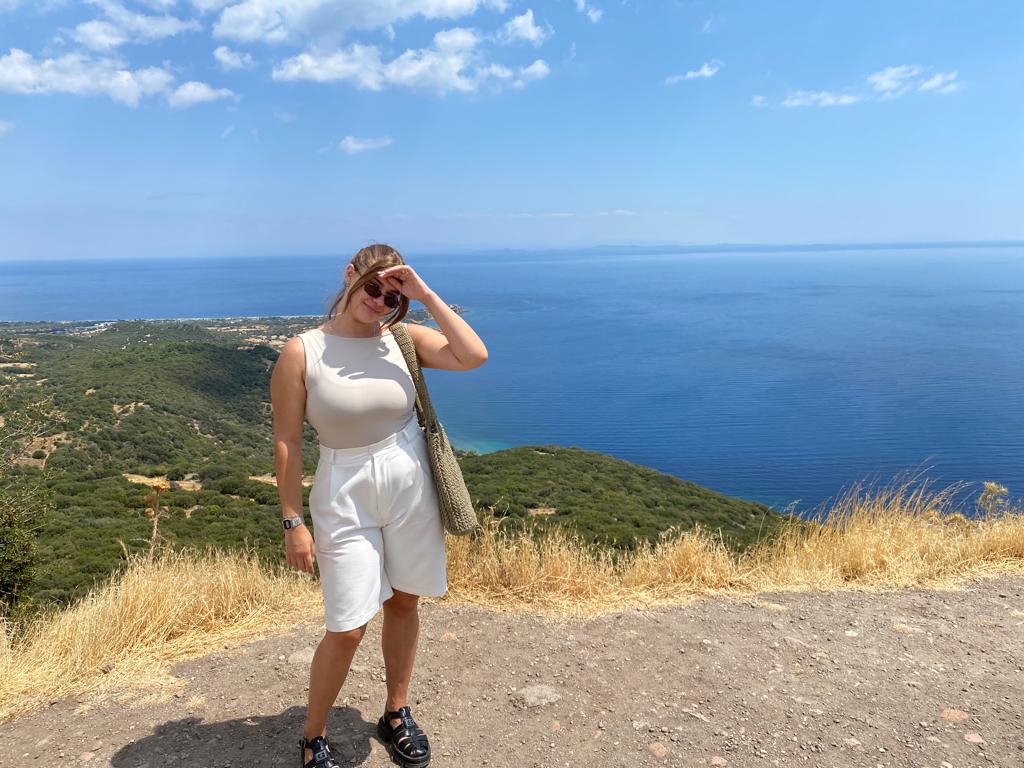.jpeg)
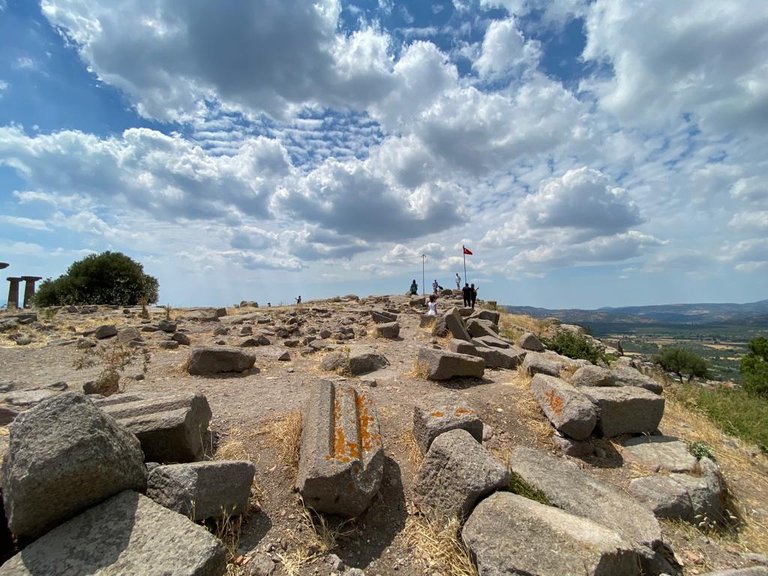.jpeg)
This place has an important place in terms of location, it is possible to foresee all possible threats. You seem to be at the peak here and you can be seen clearly and comfortably on all sides.
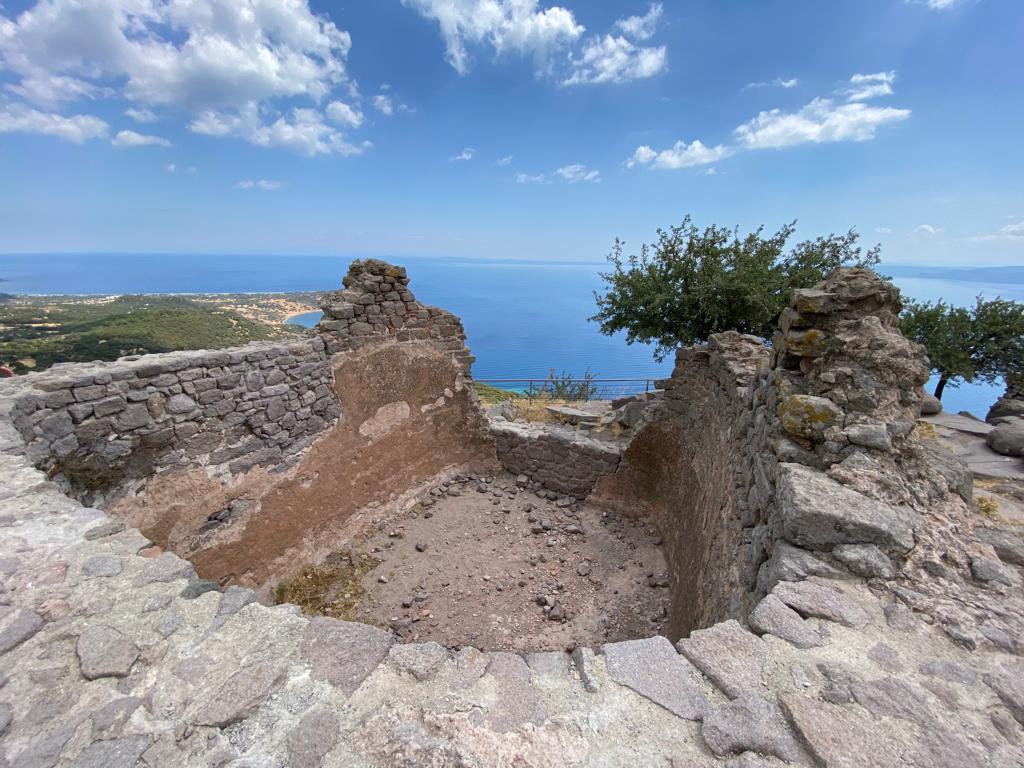.jpeg)
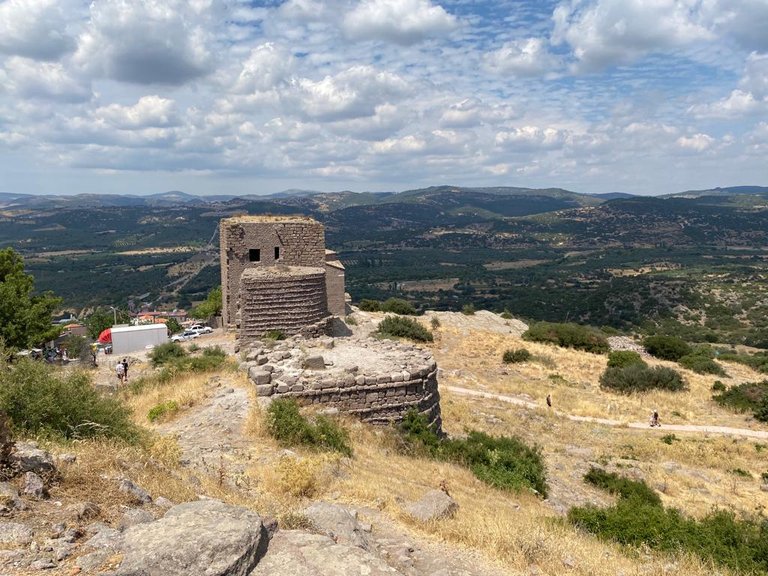.jpeg)
Murat Hüdavendigar Mosque
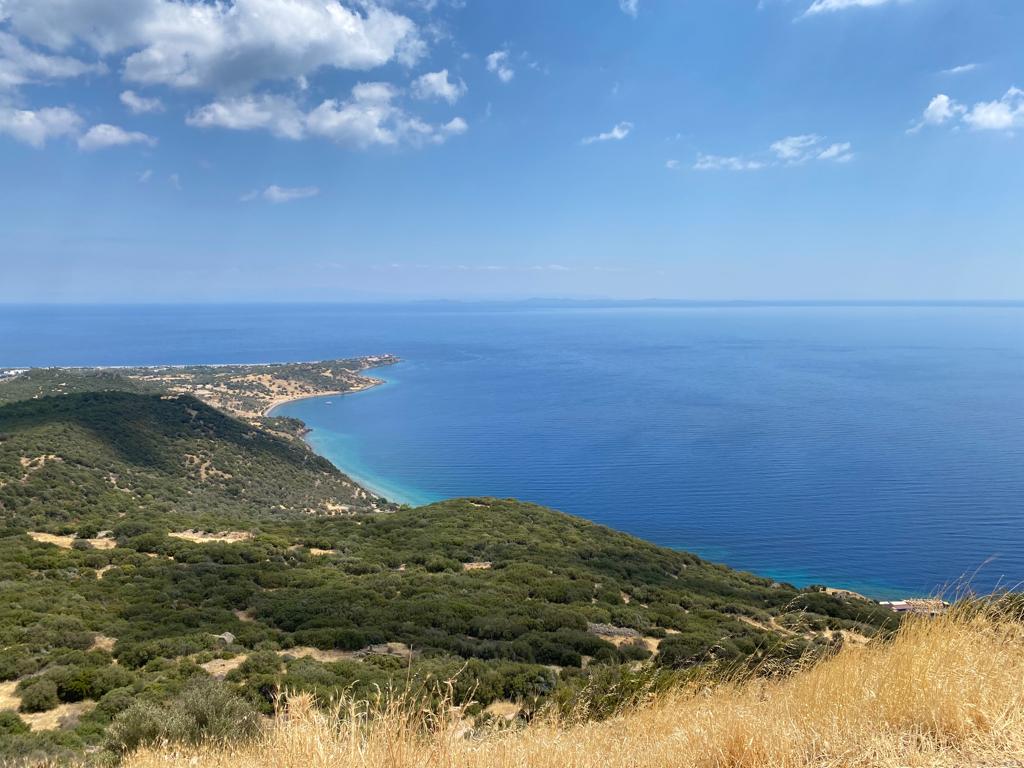
Ancient Harbour
We had seen the Athena Temple before on our trip to Miniaturk and we wanted to visit it very much, it was a much more fun experience to see the real version of this place.
Since we started our tour directly from the peak, there are places where there are many ruins on the roads leading down, we can't wait to go to the section where the Ancient Theater is. We have seen the top of the temple up to here, and now a long road awaits us down.
Cisterns
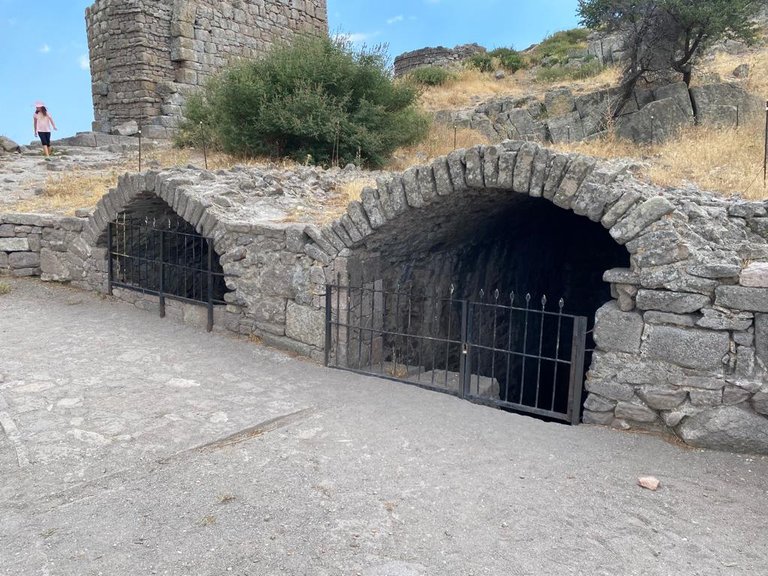.jpeg)
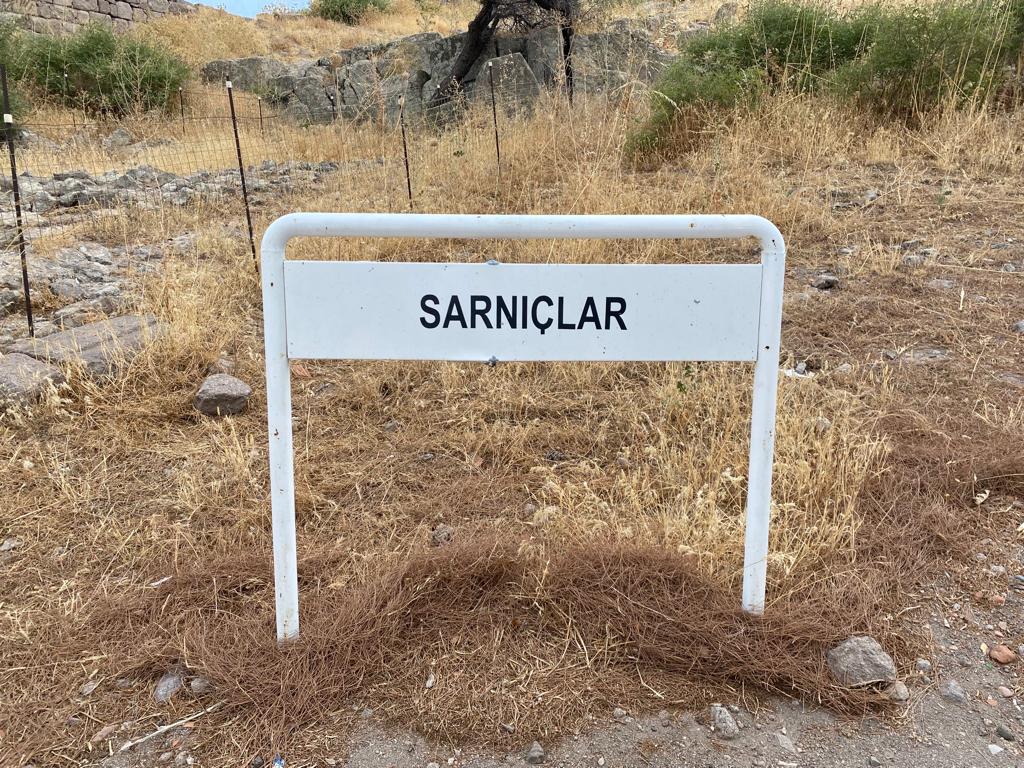.jpeg)
The cisterns are the places where the water necessary for the daily life of the ancient Assos inhabitants is stored. The cisterns within the temple complex are areas where rainwater is collected and stored. These cisterns enabled the water to be used both for the needs of the temple and for the surrounding settlement.
Bouleuterion
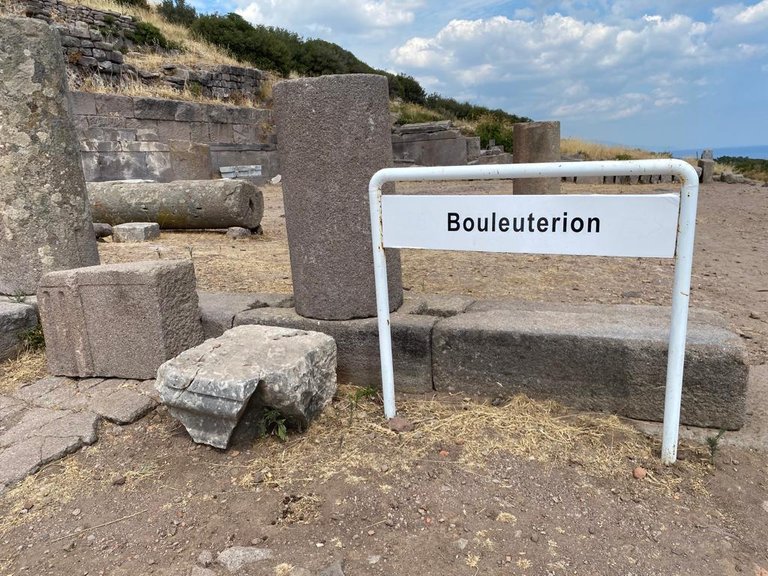
Bouleuterion was used as a kind of meeting room where city administration took place, meetings were held and decisions were made in ancient times. Assos Bouleuterion was also built to carry this function.
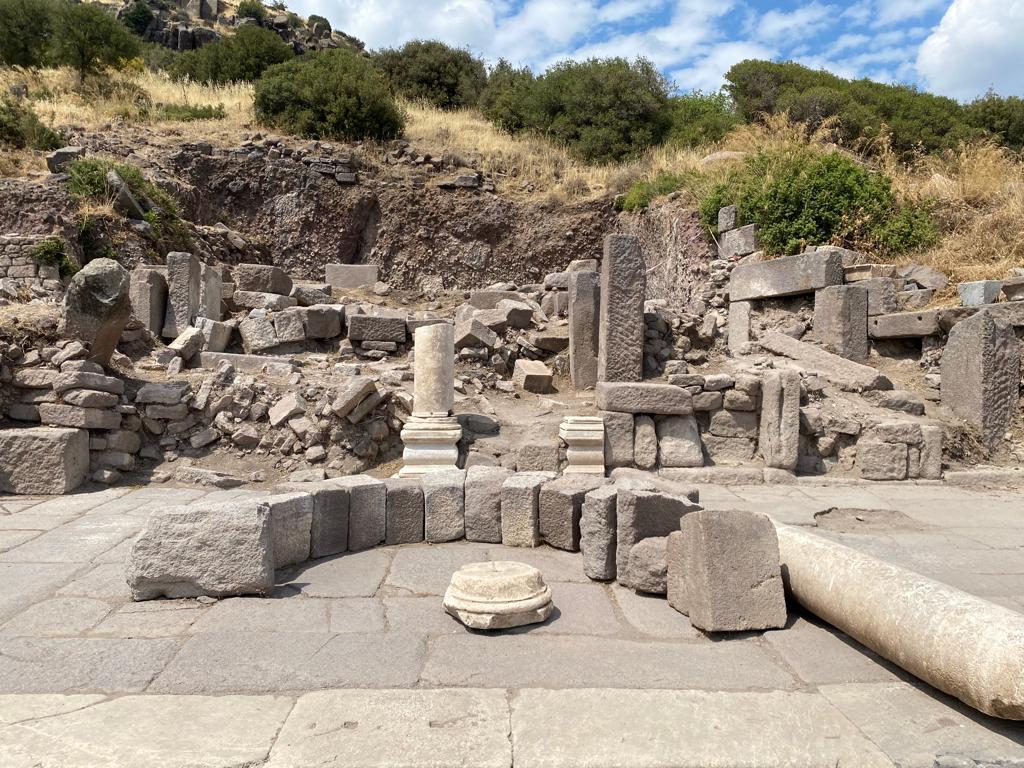.jpeg)
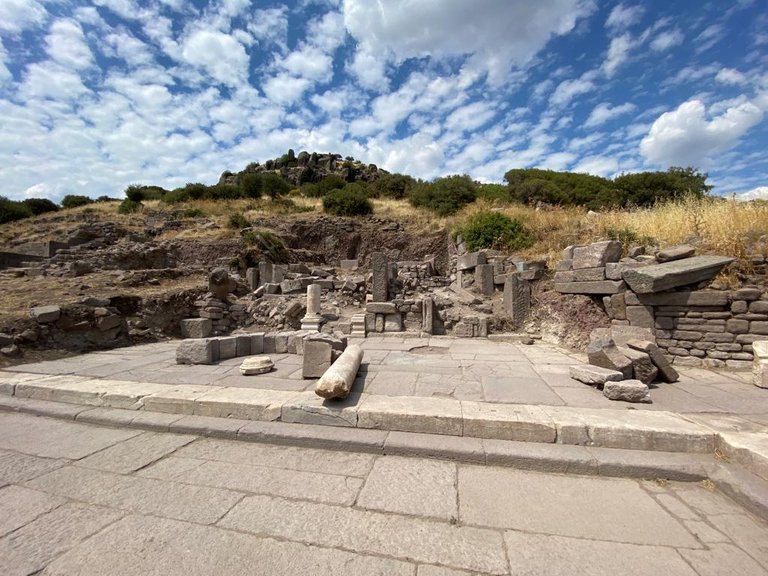.jpeg)
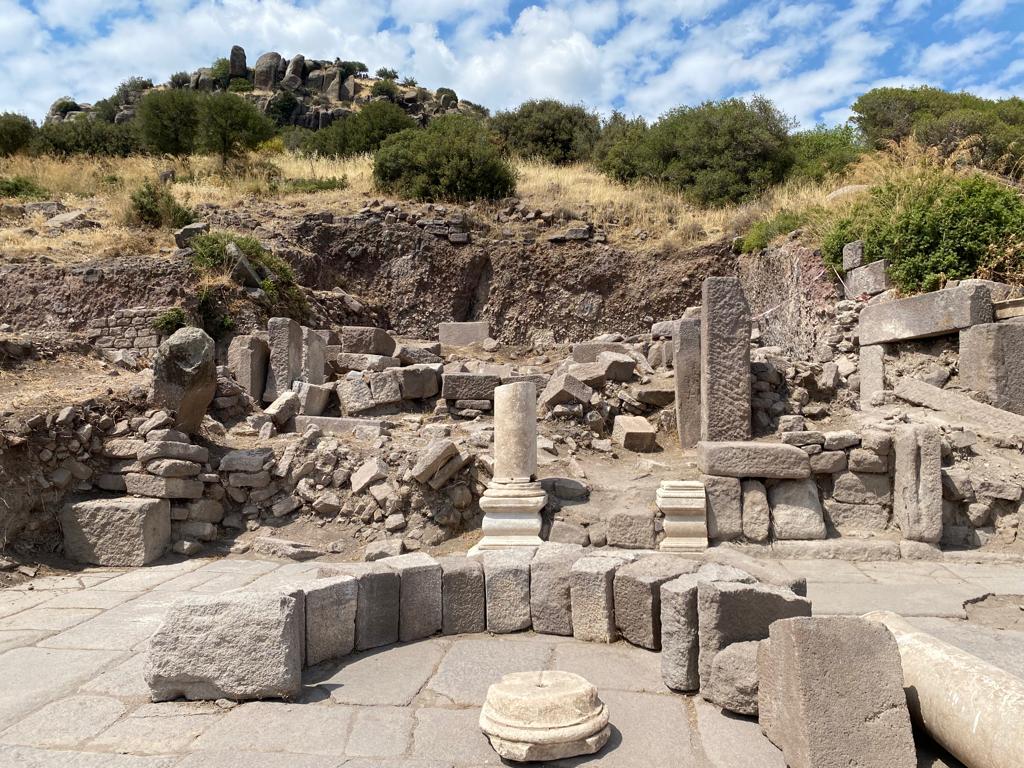.jpeg)
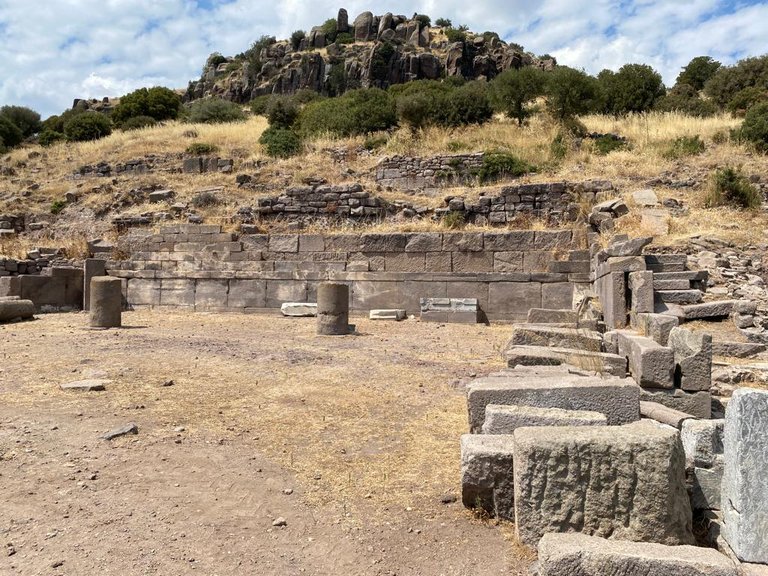.jpeg)
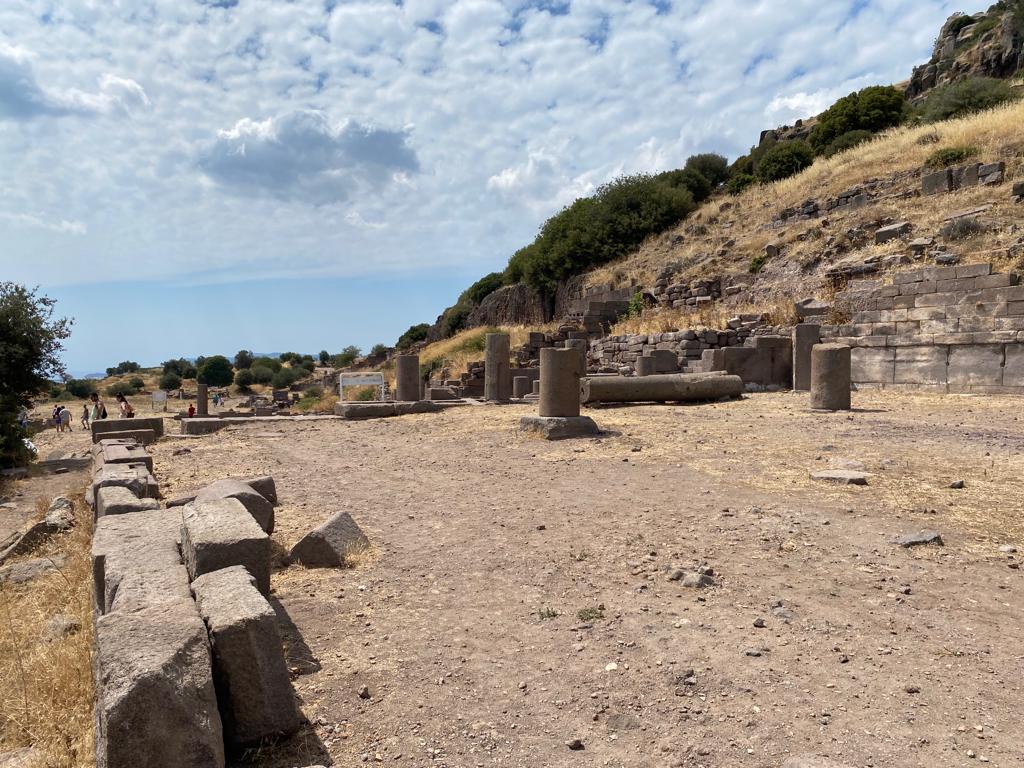.jpeg)
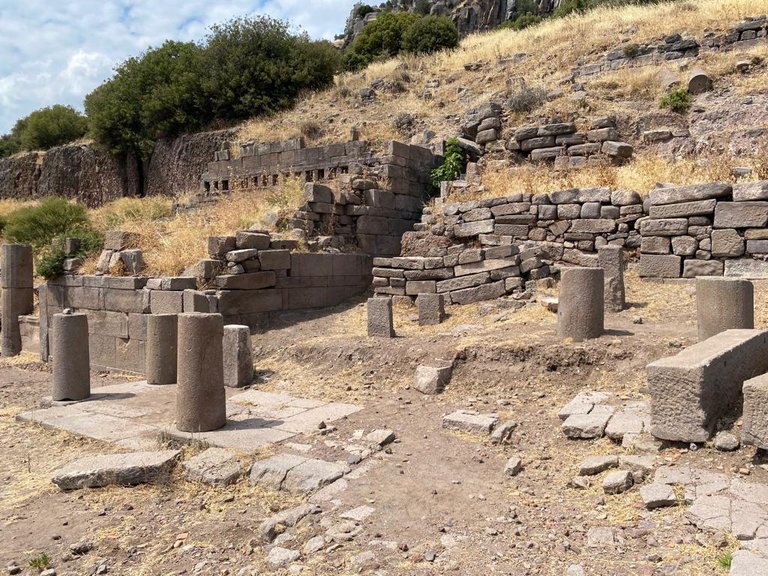.jpeg)
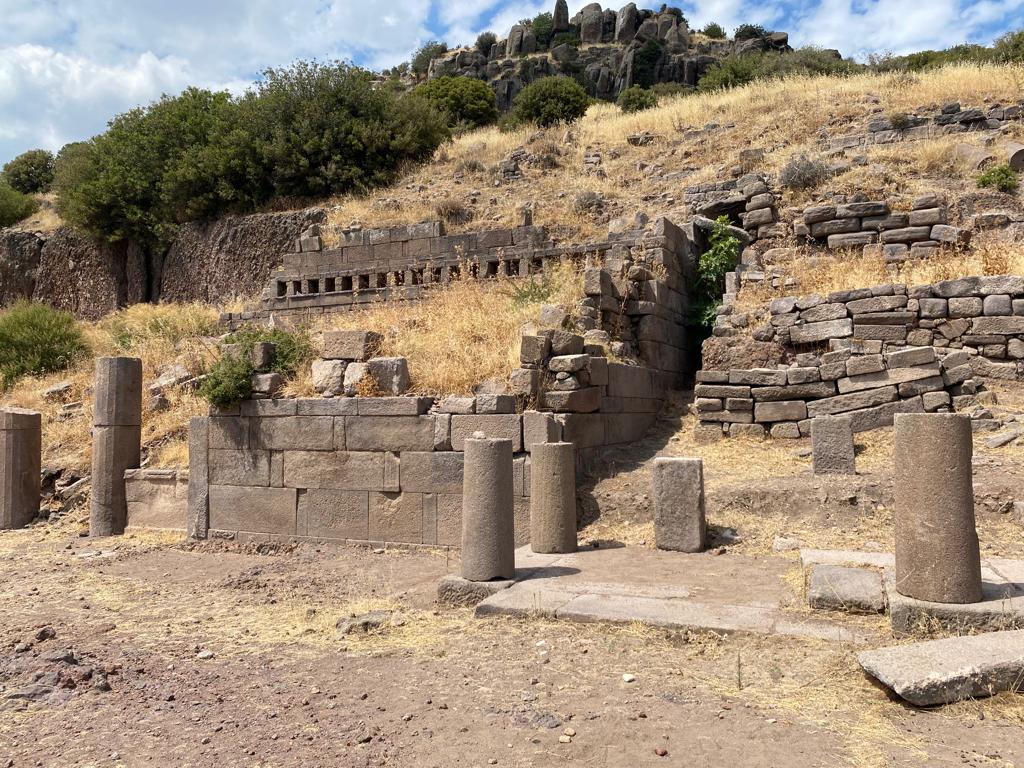.jpeg)
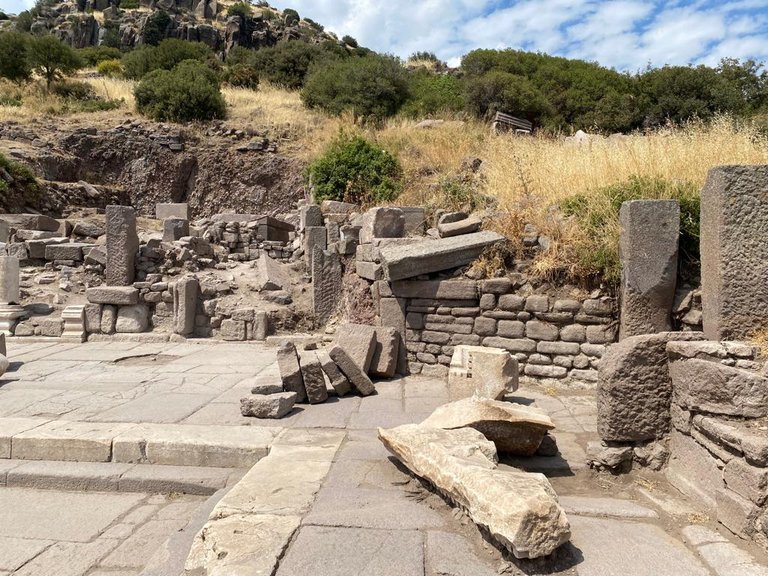.jpeg)
Agora
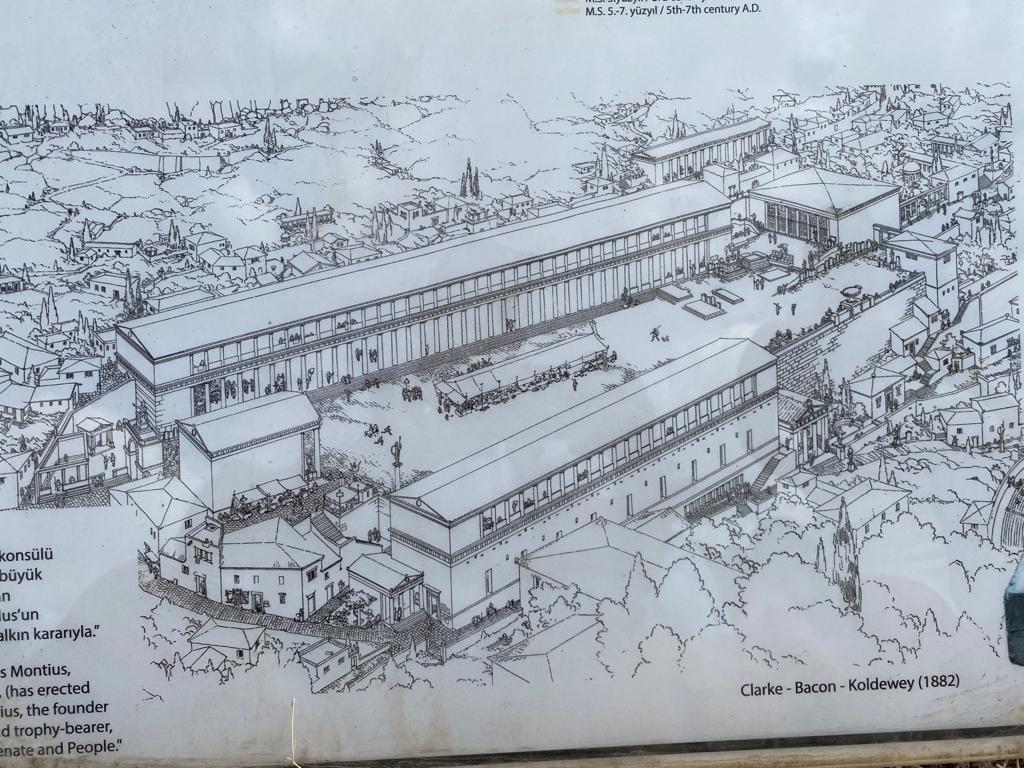.jpeg)
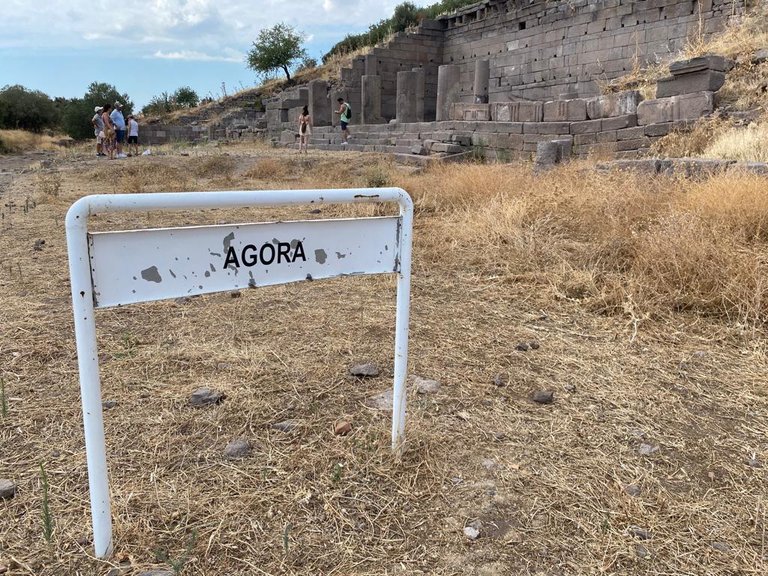.jpeg)
Agora was one of the important trade centers of the region. Here, traders and locals used to exhibit and shop their wares. At the same time, the Agora was also used as a venue for social events and festivals. Concerts, theater plays, religious rites and other events were held in the Agora.
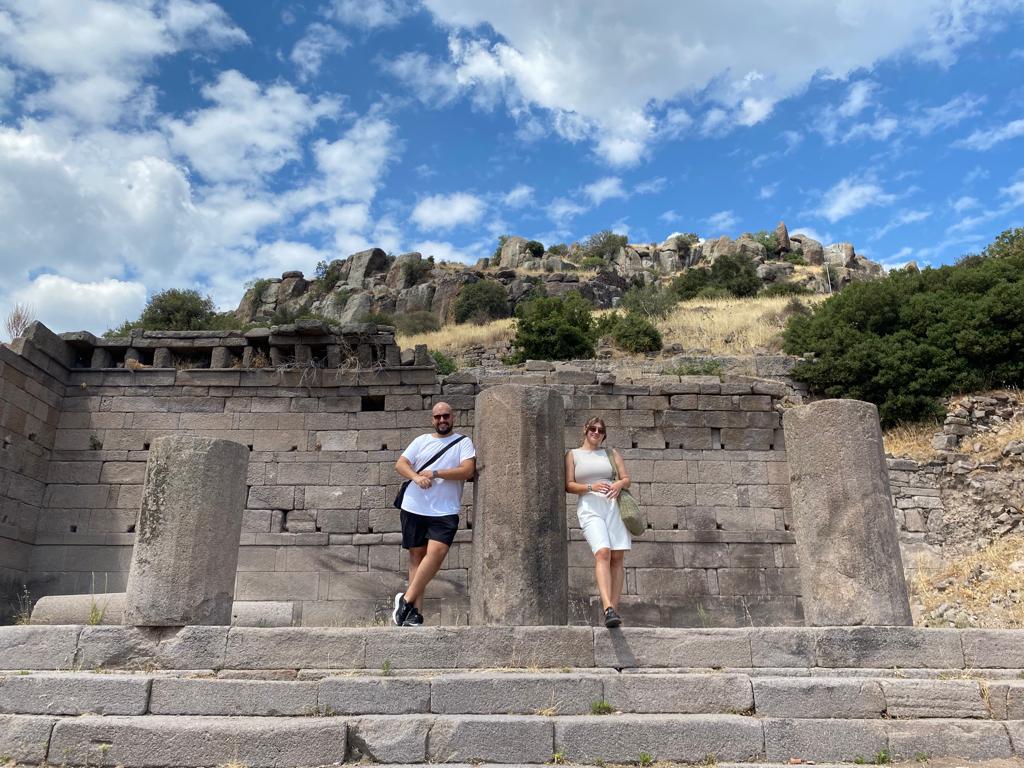.jpeg)
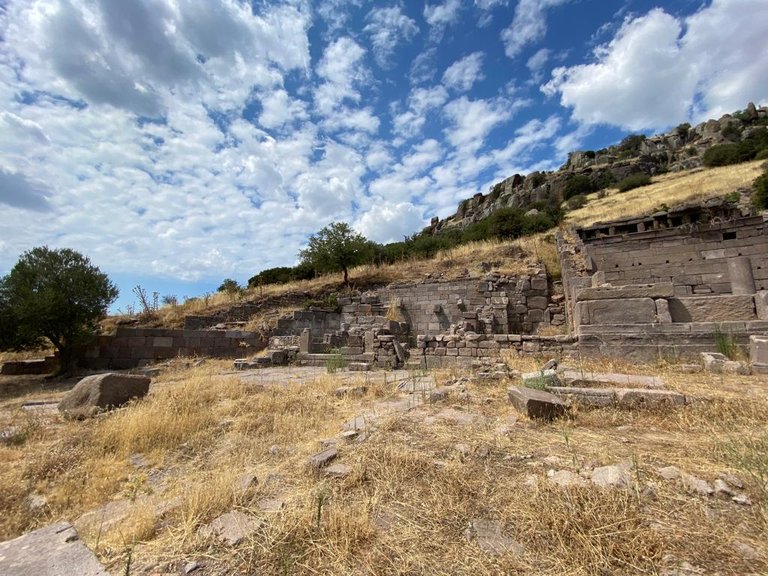.jpeg)
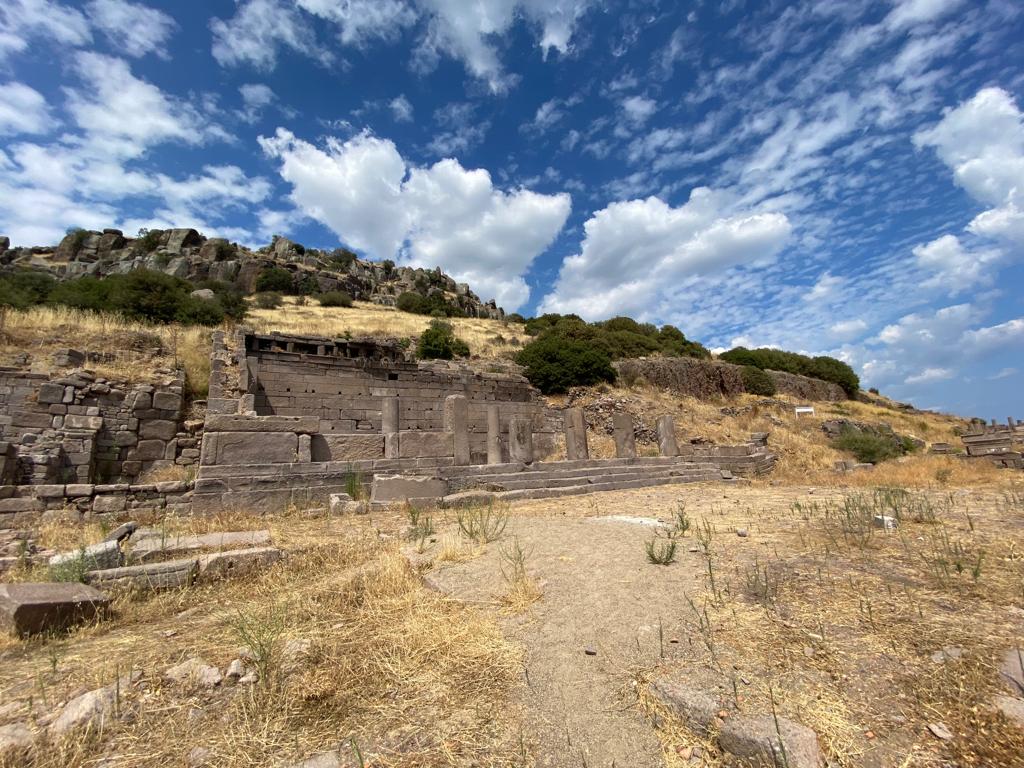.jpeg)
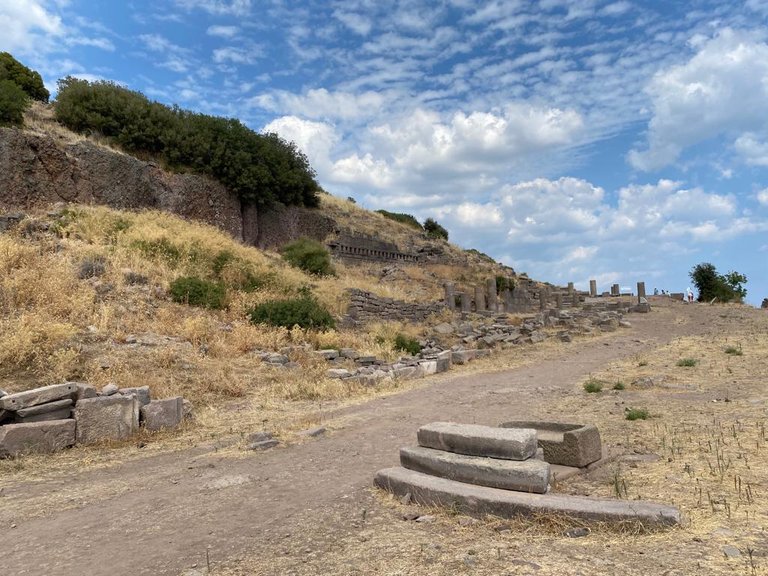.jpeg)
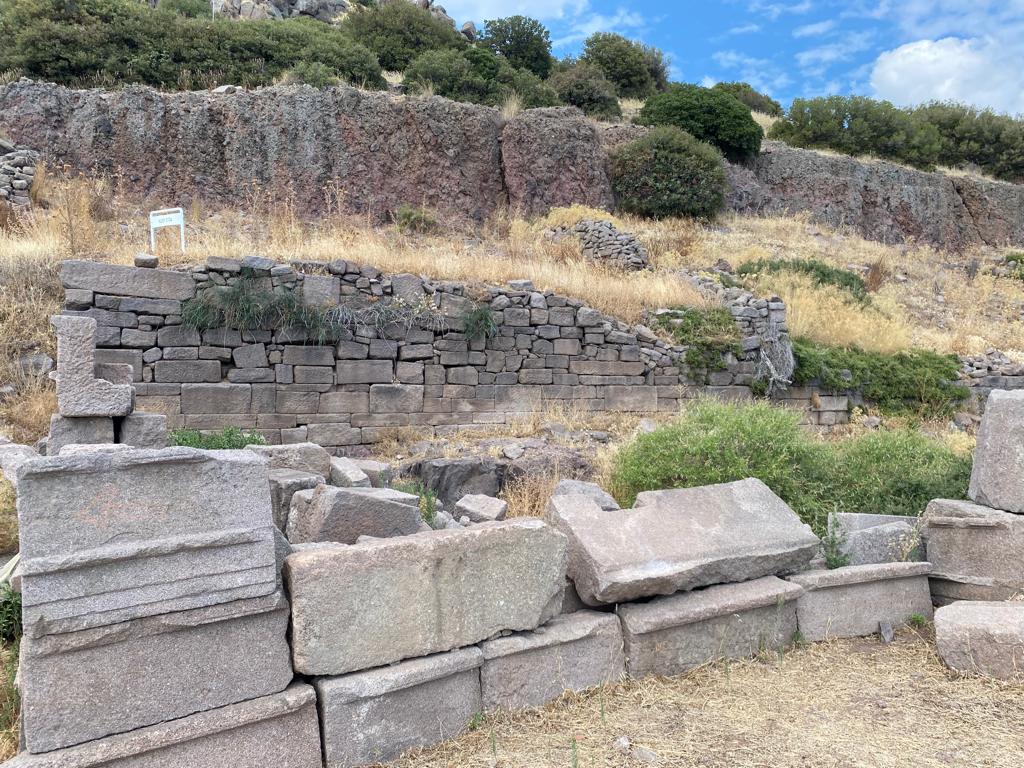.jpeg)
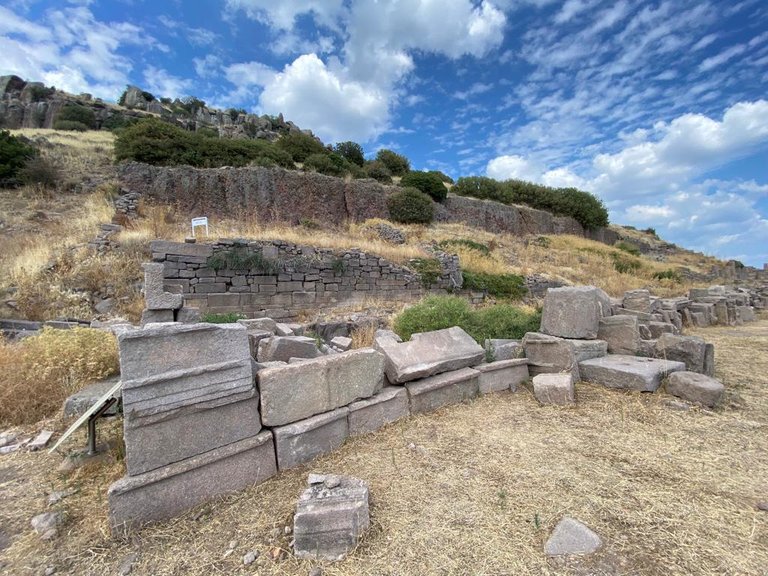.jpeg)
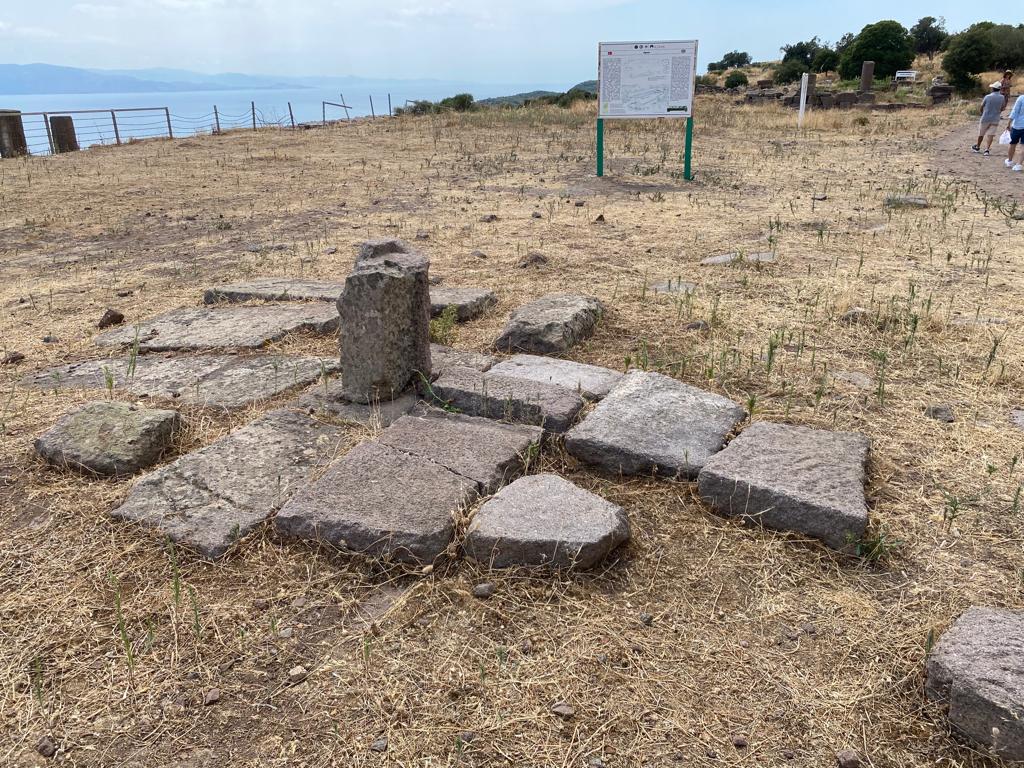
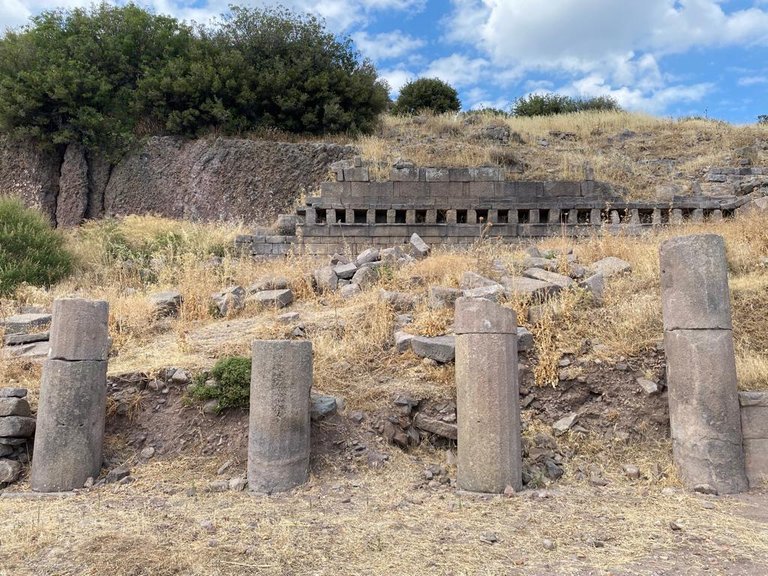.jpeg)

The inscriptions on these ruins, which stand a little high in front of the Agora, caught our attention.
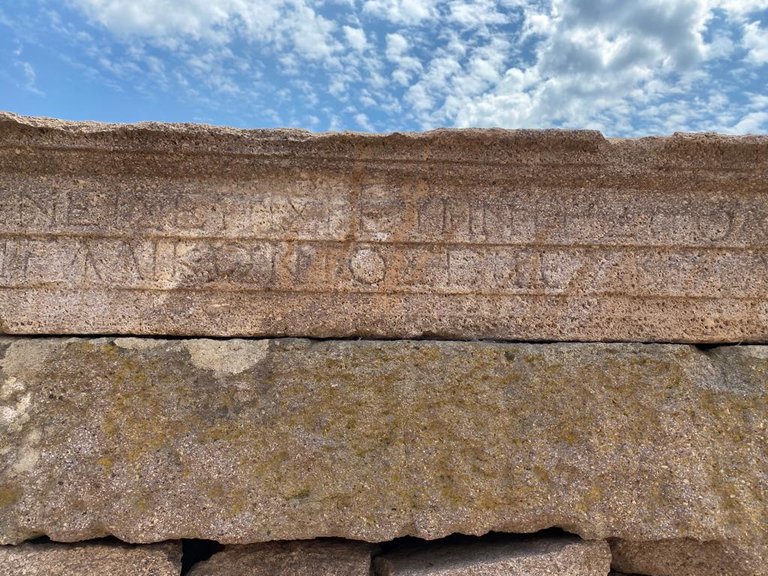.jpeg)
The ruins randomly we see while we're walking around
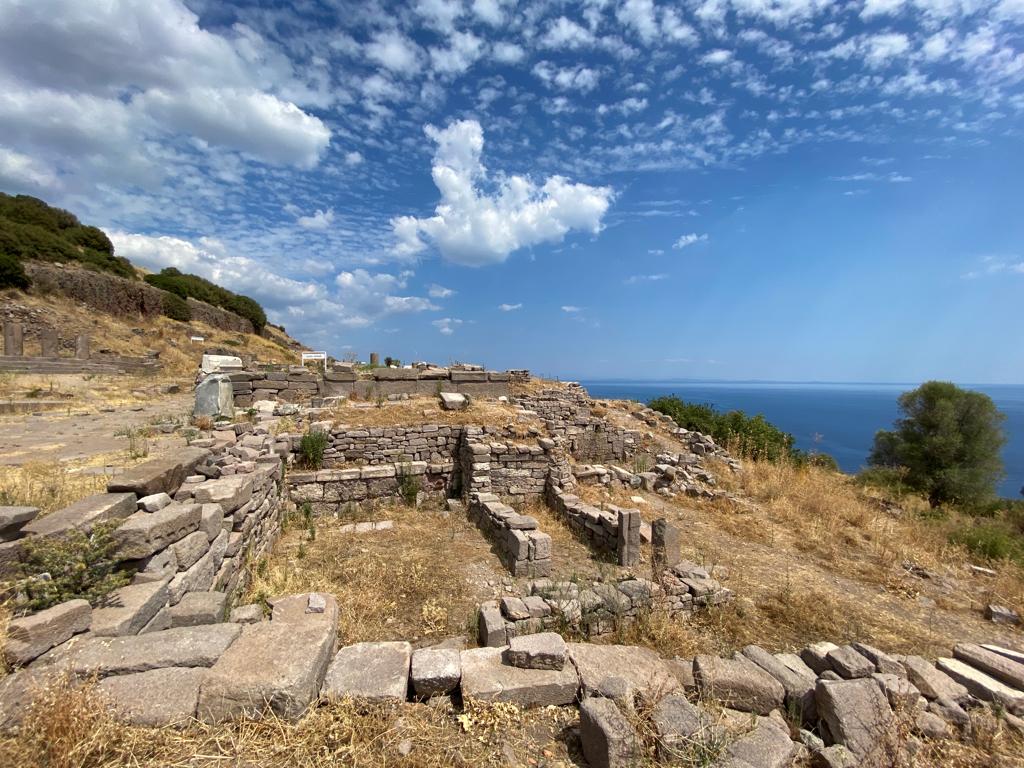

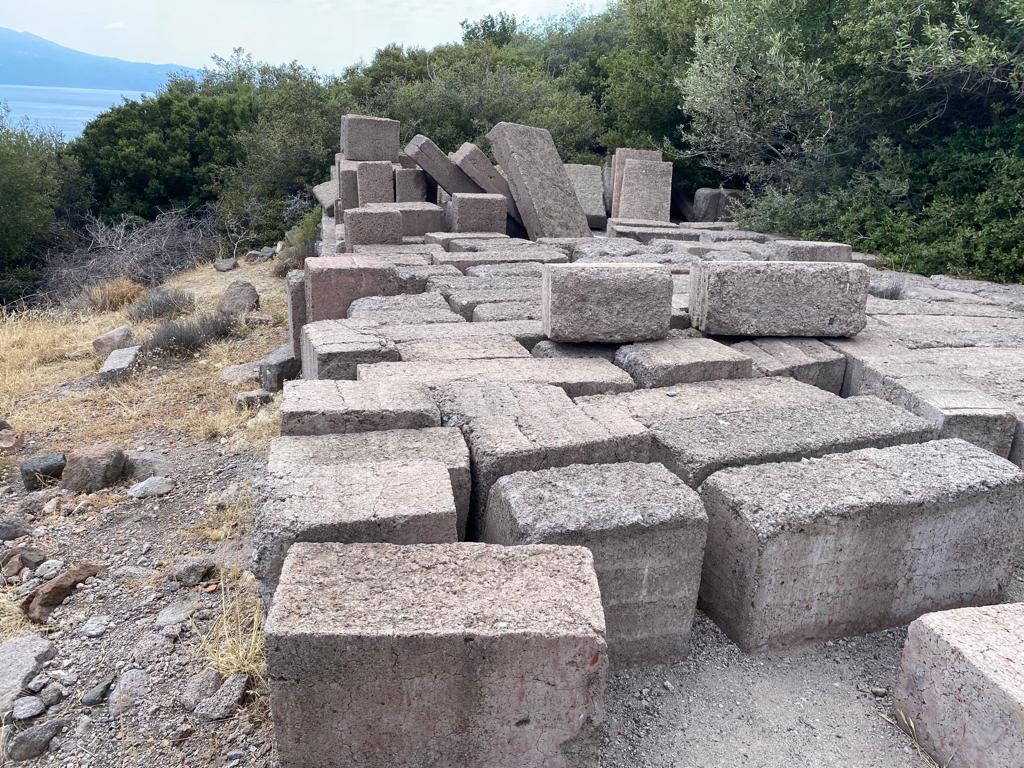.jpeg)
South Stoa & Bath
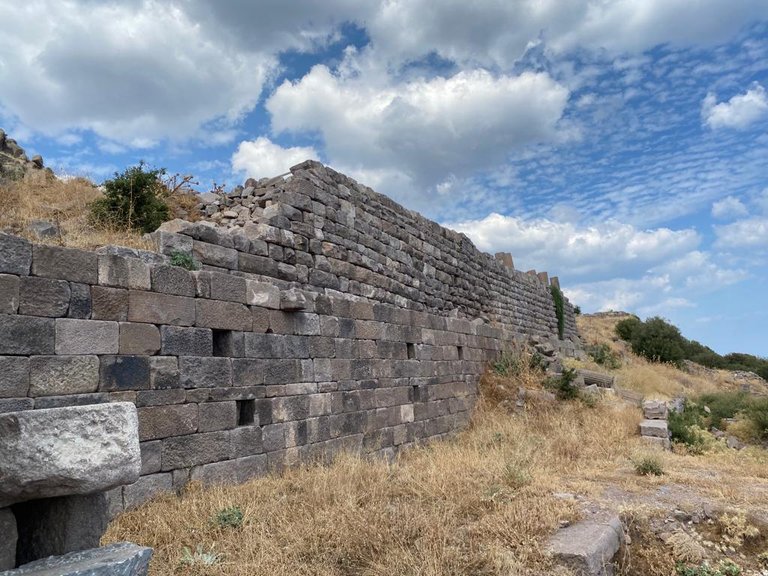
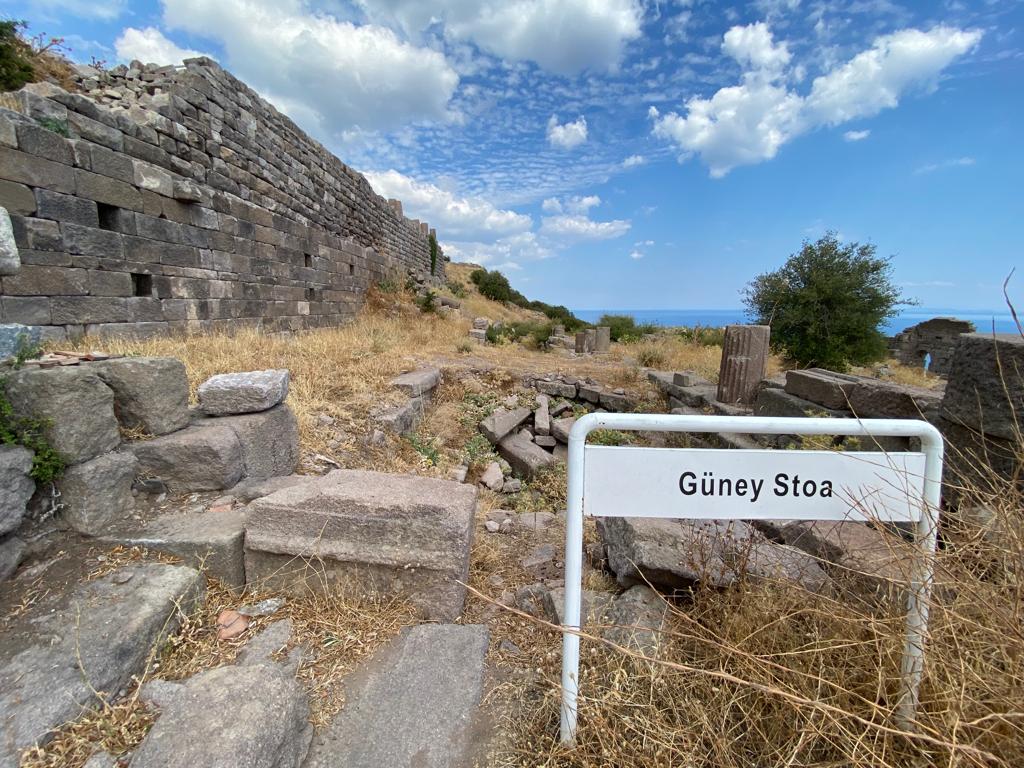
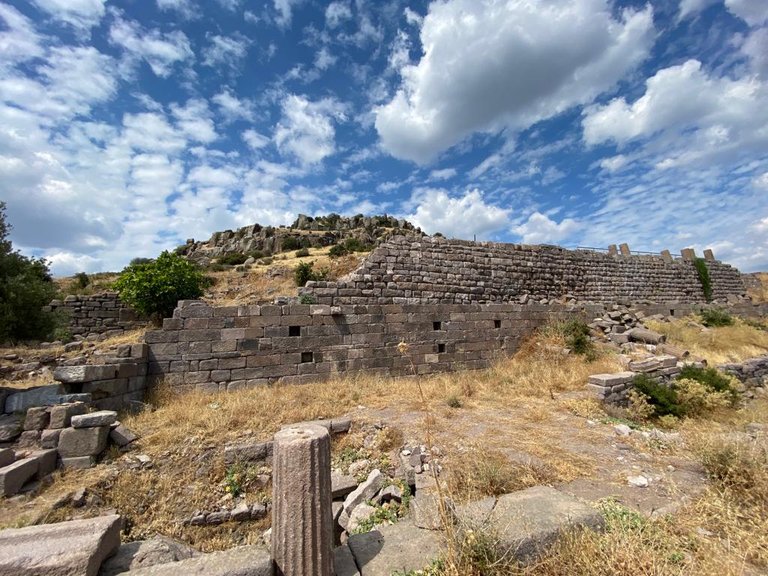.jpeg)
The stoa stretching along the south terrace wall of the Agora is 70m long and 21m high. The basement floor of the stoa was arranged as a cistern, the second and third floors as a warehouse, a shop, and the fourth floor opening to the agora was arranged as a stoa. To the east of the stoa is a fountain dating to the 4th century BC, and on its southern edge there is a mausoleum built in memory of the brothers Kallisthenes and Aristias. The agora is reached by the stairs on the east and west sides of the south stoa. During the Roman Imperial Period, a new street was built in front of the sotan and a bathhouse was built on its southern edge.
The bath was built by the prominent Roman citizen of the city, Lolia Antiochius. A part of the underfloor heating system of the bath was unearthed during the excavations in 1882. Due to the excavation in a small part of the building, only an arched wall and foundation remains can be seen. It is estimated that the water need of the bath is met from the large cisterns in front of the baths. According to the inscription on the south façade of the surviving arched wall, a part of the bath was converted into a church by a person named Helladios during the Early Byzantine Period (6th century AD).
source: Informative Guide
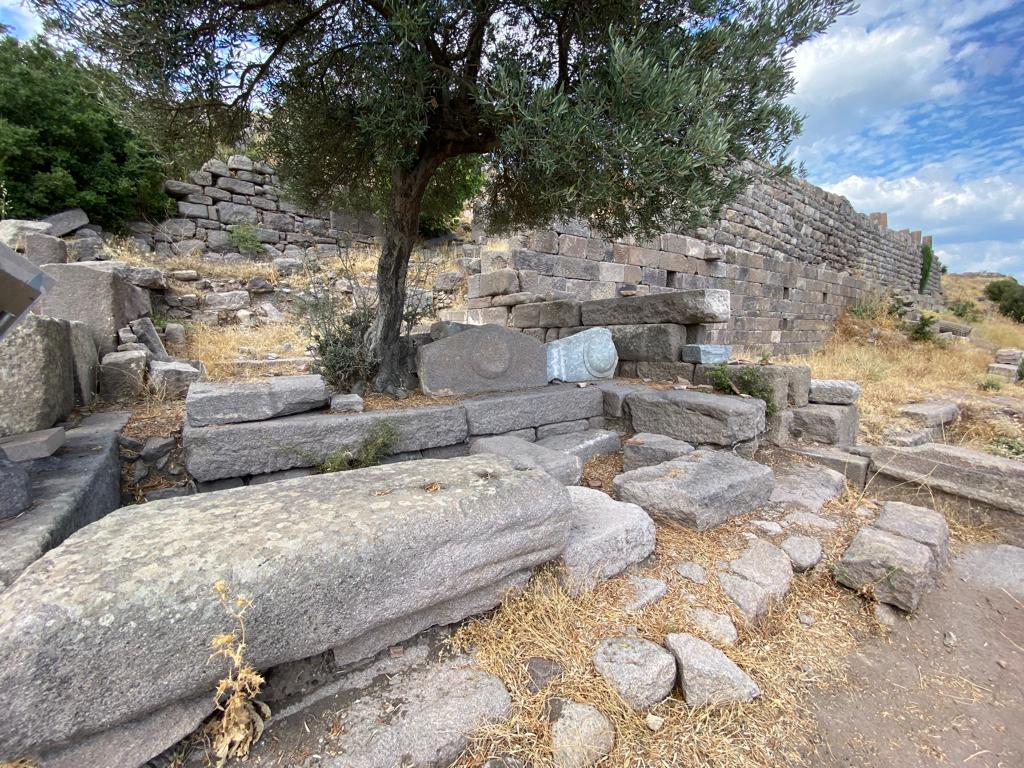.jpeg)
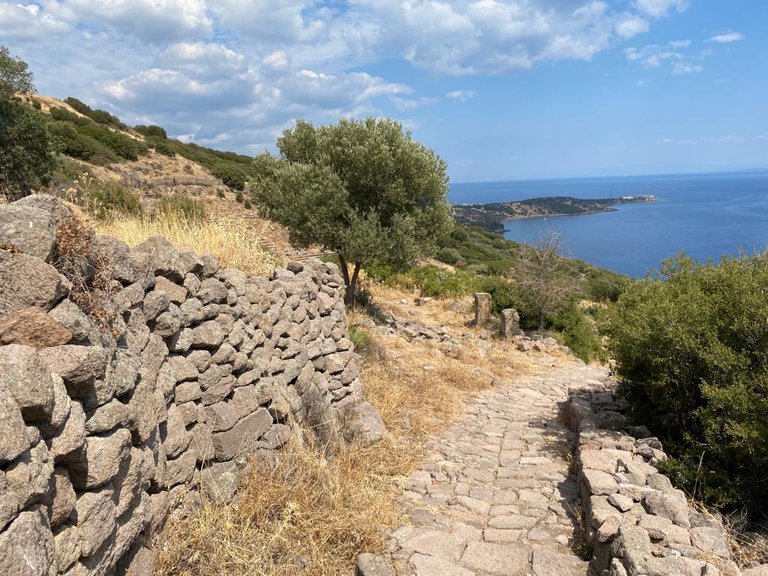.jpeg)
Ancient Theater
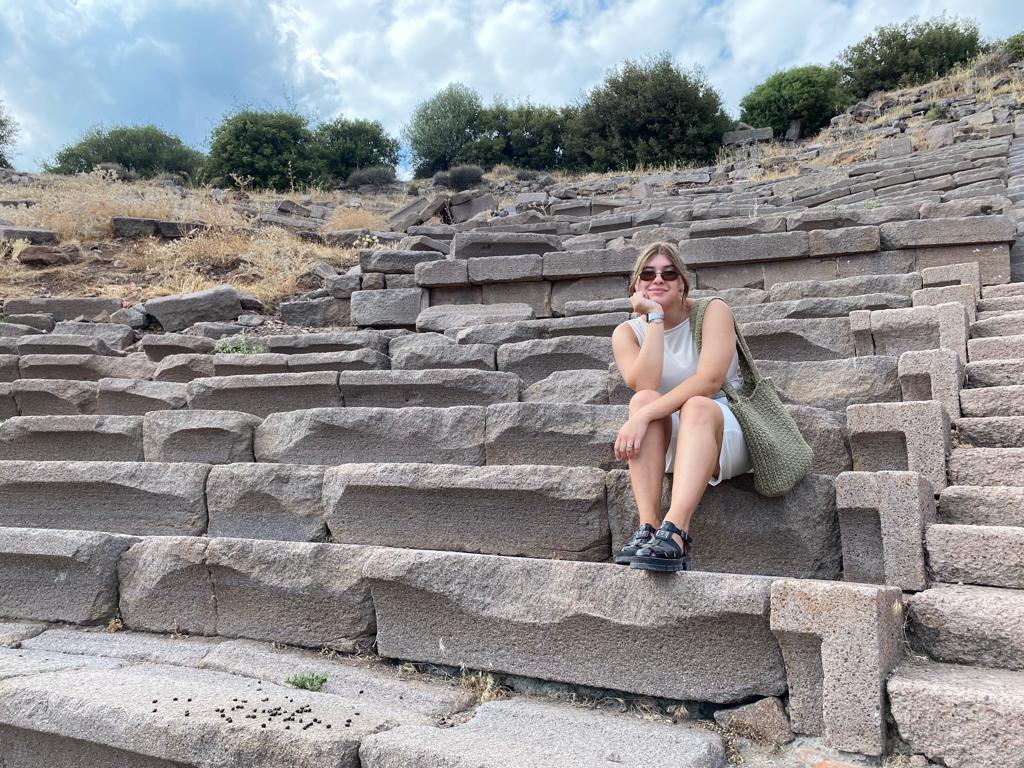.jpeg)
The theater is one of the important buildings of the ancient period and has contributed greatly to the cultural life of this region. The Ancient Theater was built on a hill overlooking the sea and offers a magnificent view thanks to its location. In ancient times, theater was used especially for religious and cultural events. The semi-circular seating arrangement of the theater allowed the audience to see the stage and performances easily. The stone steps and benches of the Ancient Theater are an indication of the construction skills and architectural talents of the ancient period. This theater hosted social events and cultural performances in ancient times.
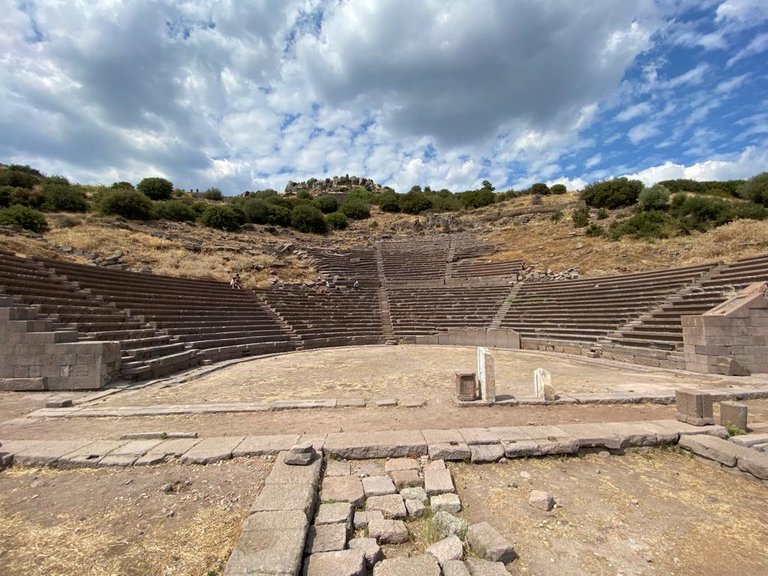.jpeg)
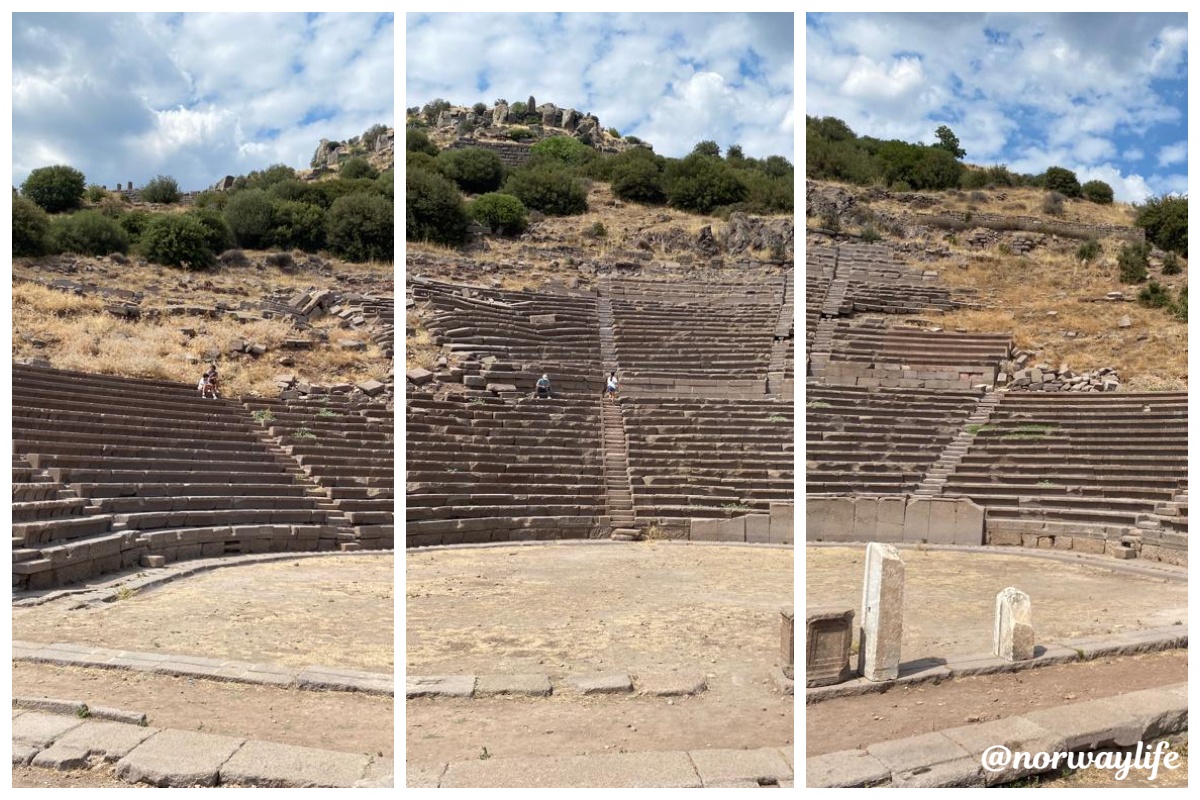
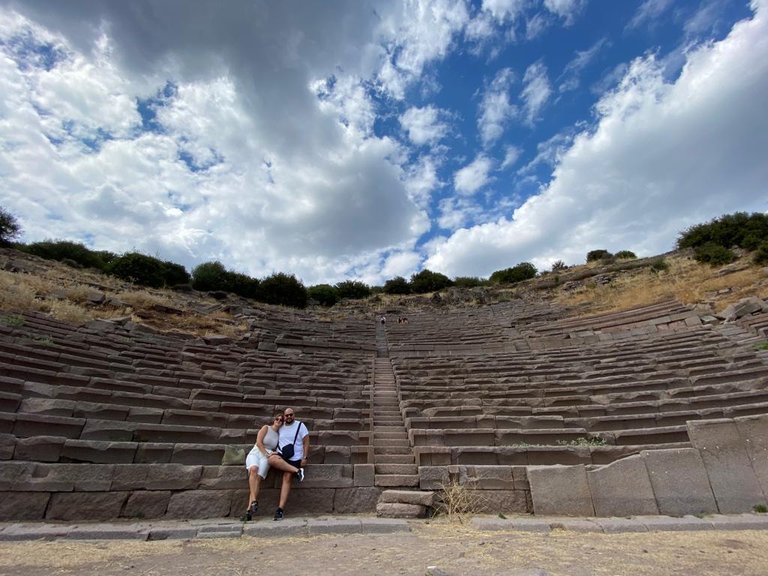.jpeg)
I would like to share one of the most important notes I can give you about this place. Since the ancient city is quite large and the entrance starts from the summit, just like the exit, it's done from the summit. Therefore, going back down the path you came from is really exhausting, as you'll need to walk several kilometers uphill. When you reach the area where the ancient theater is located below, there is another entrance gate, but this gate is closed. Right next to the gate, there's a gap where you can pass through for the exit, but as I mentioned, you'll still need to go uphill. That's why my advice to you is to park your car directly here and pass through the gap I mentioned first to visit the ruins below. Then, get back to your car and go to the main entrance gate to buy a ticket and visit the Temple of Athena at the summit. While exploring here, we became friends with the people who took our photos, and they gave us a ride uphill in their car. Because, as I said, they had been here before and knew this clever tactic. If they hadn't given us a ride to our car, we would probably still be climbing that hill right now :)







